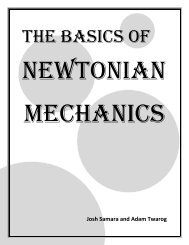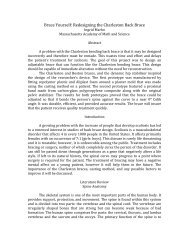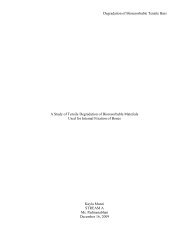Art Forgeries and Their Detection - the Scientia Review
Art Forgeries and Their Detection - the Scientia Review
Art Forgeries and Their Detection - the Scientia Review
Create successful ePaper yourself
Turn your PDF publications into a flip-book with our unique Google optimized e-Paper software.
<strong>Art</strong>ist Forgers<br />
There have been many forgeries throughout <strong>the</strong> years, <strong>and</strong> behind an art<br />
forgery is <strong>the</strong> forger. Han Van Meegeren sold his own paintings as if <strong>the</strong>y<br />
were masterpieces from a well known artist named Jan Vermeer. To<br />
make his paintings seem more au<strong>the</strong>ntic, Meegeren baked his painting to<br />
obtain an old look, rolled it up to make It appear as if it were cracked<br />
formed over several years, <strong>and</strong> he even damaged it <strong>and</strong> restored it. Sev-<br />
eral o<strong>the</strong>r well known art forgers had similar ways to make <strong>the</strong>ir work ap-<br />
pear like <strong>the</strong> original artist’s. Among <strong>the</strong> most famous art forgers are<br />
Eric Hebborn, Tom Keating, <strong>and</strong> Elmyr de Hory.<br />
The supper at Emmaus<br />
was believed to have<br />
been painted by Jan<br />
Vermeer, but in fact it<br />
was painted by Han<br />
Van Meegeren.

















